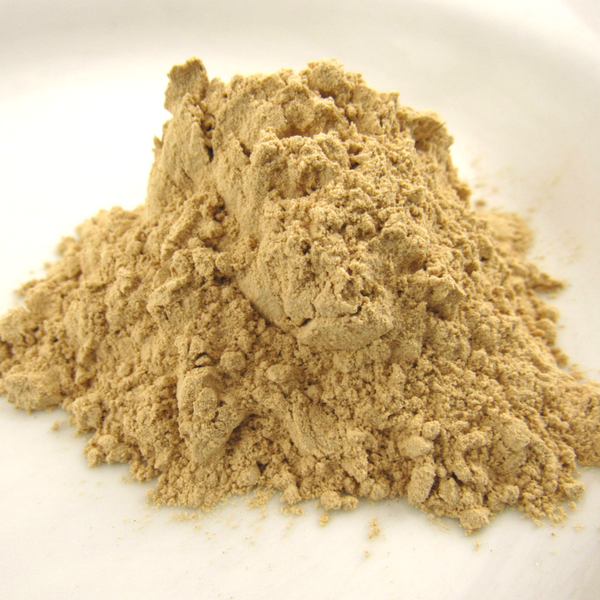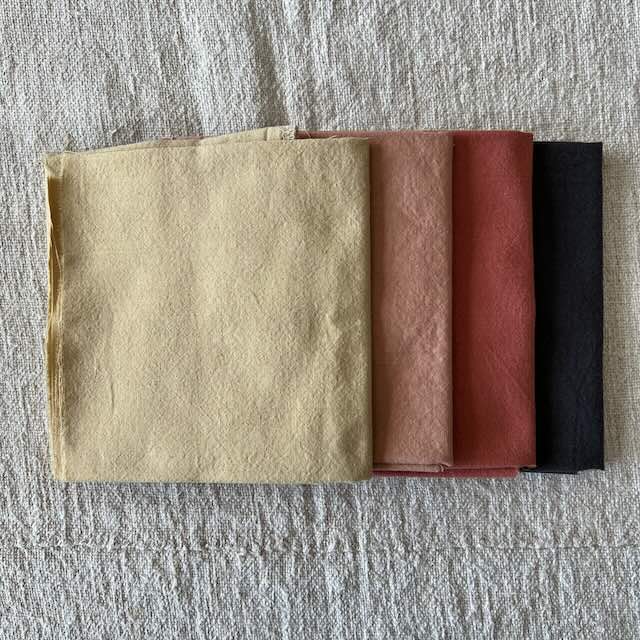
This week’s Mordant Monday focuses on Gallo Tannin, also known as Oak Gall tannin, or Oak Galls. We used the extract made from Oak Galls in our gradation, but a similar result comes from oak galls that have been crushed or pulverized. Gallo Tannin is one of the ancient tannins with many uses, including making black ink, leather tanning, and in traditional Asian medicine. It is the most commonly used tannin when mordanting with tannin + alum, as the color it imparts is very light, and it doesn’t show a strong undertone, like sumac or walnut or other tannins with a darker base shade. Sometimes it is referred to as a “clear” tannin. In these experiments, we mordanted with Gallo Tannin and alum, then over dyed with Fustic, Madder and Iron.
This gradation is different than our previous experiments in two ways. First, we did not use Gallo Tannin alone as a color for our gradation. It was a little too light and didn’t really add to the palette. Second, we did not create an indigo gradation using Gallo Tannin as the base. Again, it was so light, that you couldn’t really see how it influenced the indigo gradation. However, we added Fustic as our first over dye, and then madder on top of that and got some really nice shades. Like our other examples, when combined with other colors you can get exciting mixes and beautiful color blends that harmonize and are perfect for patchwork, creating gradations and stitching.
Skill level: Good for an intermediate or advanced dyer. You should be familiar with cellulose mordanting, using iron as a post-bath, and dyeing with natural dye extracts.
The inspiration for using Gallo Tannin comes from Sara Buscaglia of Ancient Futures Farm and author of the book Farm & Folk Quilt Alchemy (we have signed copies!) In her book, Sara beautifully articulated some ideas that I’d been mulling over and when I saw the results she achieved, I knew we should dive in and start testing colors. It’s been a lot of fun!
Here are some ideas to get you started. We are dyeing with a variation of the traditional tannin-alum cellulose mordant recipe. Since the color of Gallo Tannin by itself on the fabric is a very subtle color, we moved right away into a Fustic over dye to set a golden yellow base for this colorway.
Gallo Tannin and Fustic – the first over dye

Pictured here are Gallo Tannin mordanted samples over dyed with Fustic, then with madder in light and dark shades, then finally an Iron dip,
Start with 4 pieces of cotton, each approximately the size of a fat quarter (18×22 inches)
Scour cotton fabric, using our scour recipe
Then follow our tannin-alum mordant recipe using Gallo Tannin. Mordant fabric with 10% Gallo Tannin and soak for 1 hour. Then create an alum mordant bath with 15% aluminum sulfate or aluminum potassium sulfate and 1.5% soda ash. Soak the fabric in this bath for 1 hour. Note: if you are using crushed Oak Galls, you can use 10% and lightly rinse any sediment off the fabric before proceeding to the alum step.
Once the fabric has been mordanted, it will be a light beige. At this point, you will over dye it with Fustic@ 10% wof.
Reserve 1 yellow Fustic piece and set aside.
Dye the other 3 pieces with Madder extract at 3%. Do not discard this dye bath as you will add more Madder to it to create a darker color.
After dyeing, reserve 1 of the Madder pieces and set aside.
With the remaining 2 pieces, deepen the Madder shade by adding another 3% Madder extract to the dye bath, then dyeing the 2 pieces so they turn a darker shade. Reserve one of the darker Madder shades.
Take the last Dark Madder swatch and dip it in an iron bath so it changes color. It should shift to a dark maroon color, possibly a little bit darker.
Notes:
- Rinse fabrics after mordanting, dyeing, and the iron post-dip, and air dry away from direct sunlight.
